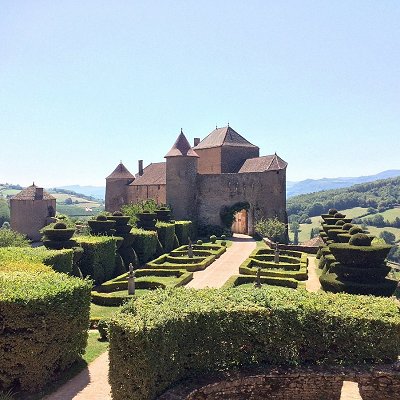
Like us on Facebook
PLACE NAMES



|
|
Cluny
|

|
|
Cluny is a commune in the eastern French department of Saône-et-Loire, in the region of Bourgogne-Franche-Comté. It is 20 km (12 mi) northwest of Mâcon. The river Grosne flows northward through the commune and crosses the town.
The town grew up around the Benedictine Abbey of Cluny, founded by Duke William I of Aquitaine in 910. The height of Cluniac influence was from the second half of the 10th century through the early 12th. The abbey was sacked by the Huguenots in 1562, and many of its valuable manuscripts were destroyed or removed.
Cluny Abbey, formerly also Cluni or Clugny, is a former Benedictine monastery in Cluny. It was dedicated to Saint Peter.
The abbey was constructed in the Romanesque architectural style, with three churches built in succession from the 4th to the early 12th centuries. The earliest basilica was the world's largest church until the St. Peter's Basilica construction began in Rome.
Cluny was founded by Duke William I of Aquitaine in 910. He nominated Berno as the first abbot of Cluny, subject only to Pope Sergius III. The abbey was notable for its stricter adherence to the Rule of St. Benedict, whereby Cluny became acknowledged as the leader of western monasticism. In 1790 during the French Revolution, the abbey was sacked and mostly destroyed, with only a small part surviving.
Starting around 1334, the Abbots of Cluny maintained a townhouse in Paris known as the Hôtel de Cluny, which has been a public museum since 1843. Apart from the name, and the building itself, it no longer possesses anything originally connected with Cluny.
The Cluny library was one of the richest and most important in France and Europe. It was a storehouse of numerous very valuable manuscripts. During the religious conflicts of 1562, the Huguenots sacked the abbey, destroying or dispersing many of the manuscripts. Of those that were left, some were burned in 1790 by a rioting mob during the French Revolution. Others still were stored away in the Cluny town hall.
The French Government worked to relocate such treasures, including those that ended up in private hands. They are now held by the Bibliothèque nationale de France at Paris. The British Museum holds some sixty or so charters originating from Cluny.
 Feel free to Email me any additions or corrections Feel free to Email me any additions or corrections
LINKS AVAILABLE TO YOUR SITE
| | |





